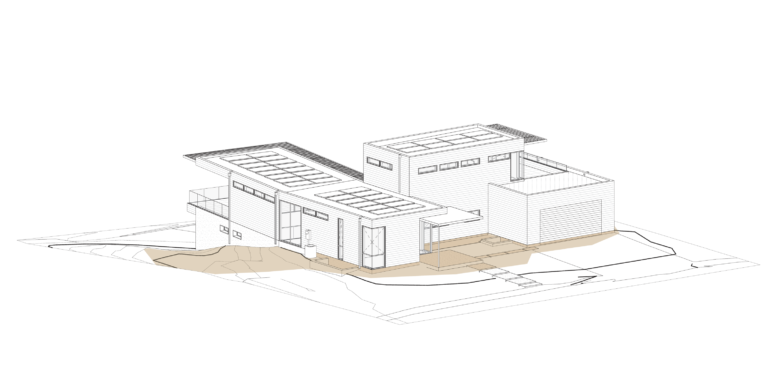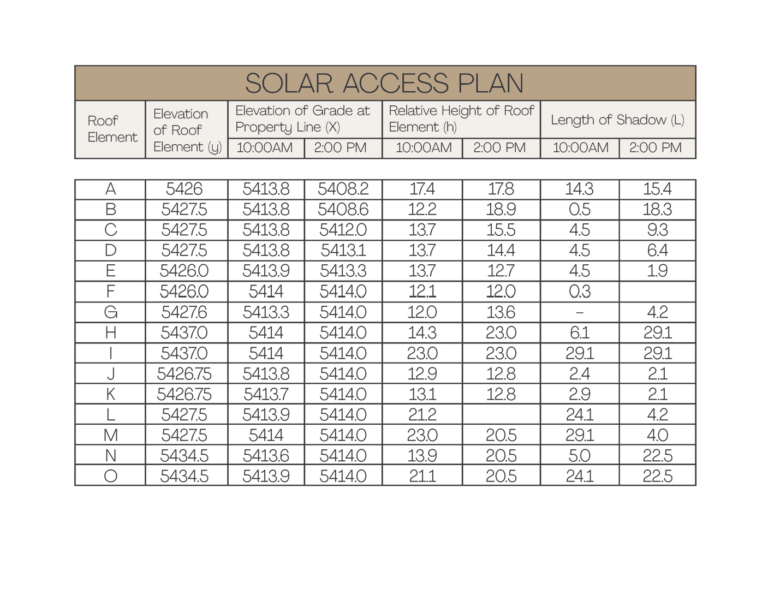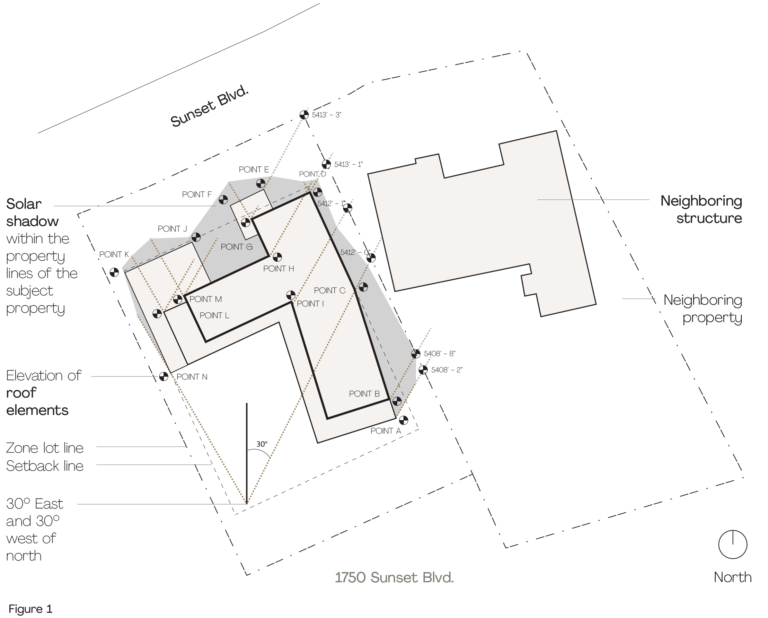Understanding Boulder's Solar Access
Understanding Solar Access in the City of Boulder
If you are looking to build a new project in the city of Boulder, there are a few things that you may want to know about the Solar Shadow Ordinance, also referred to as the “Solar Access ordinance” or the “Solar Fence”. The ordinance was put into place in 1982, so it has been around for a while now, but many people are still unaware of how significantly this can impact a new project. We thought would be helpful to provide a case study that dives into our most recent project to clarify the requirements of this ordinance and explain how it may affect a new project that you are considering.
The most important thing to recognize about the Solar Access ordinance is that it affects every project differently. There are also a lot of factors that come into play when it comes to how it will affect a project, below is a short list of things to consider.
- The siting of a building on a parcel
- Which side of the street the parcel is on
- The elevation of the ground in which a building is or will be located
- The zoning of the neighboring lots and their existing built structures
- Required for both new buildings and additions
In the simplest terms, the solar access protection is a regulation on the potential shadow that is cast from a new building or addition onto a neighboring property at the time that it would span the largest angle which is between 10am and 2pm on December 21st. This is measured by calculating where the shadow falls within a 30° angle east and 30° west of due north.

The city of Boulder is divided into two different Solar Access zones that are categorized by zone district. The first zone, Solar Access Area I consists of lots that are protected by a 12-foot solar fence. The second, Solar Access Area II consists of lots that are protected by a 25-foot solar fence. All other zone districts are in Solar Access Area III and these properties are not protected by a solar fence requirement. Once you know which zone district your property is in, you can then find out which solar access zone your property falls into.
Our most recent project, 1750 Sunset Blvd., is a good case study to look at. This project is in the RL-1 zone district, meaning that it is subject to the solar access regulation, and it has a 12-foot solar fence requirement.
The Solar Analysis that we completed documents the elevation of all the tallest roof elements that may cast a shadow at both 30° east and 30° west of due north, the elevation at the property line, the relative height of each roof element, the length of the shadow and a diagram of the shadow that is cast. This information is compiled into the Solar Analysis Worksheet that the City of Boulder provides, shown in Exhibit 1. The worksheet uses the following formula to calculate the length of the shadows cast:
A. (Y-X) = H
Elevation of the roof element (y) – elevation of property line where the shadow would cross (x) = relative height of element (h)
B. (H-F)* (1/TAN)20.67°)) = L
(Relative height of element (h) – Height of solar fence (F)) * 2.65 – Adjusted length of shadow (L)

Once this data is calculated and the information is collected, a sketch can then be formed of the solar shadow created by the building, confirming that the shadow does not fall over the neighboring property line. This is shown in Figure 1.
Reflecting on this example, it is easy to identify that if the building is on the southern side of an east-west oriented street, most of the shadow is being cast onto the front portion of the site rather than a neighboring building. If this project were on the north side of the street, the building would most likely end up being pushed to the east side of the site or the building would have to shrink to comply with the solar fence ordinance. On north-south oriented streets this ordinance influences new buildings to be built on the south edge of the site to avoid any shadow being cast over the north property line.

This is a difficult thing to calculate exactly without having surveyed the property and using 3-D computer modeling software to process this information, but it is valuable to determine the potential things you may be encountering down the road just by determining a few characteristics about the site initially and mapping out some basic information on where shadows are presumed to fall.
As stated previously, there are many factors to consider when looking at the effects of the solar fence ordinance, but if you know what zone district that your project is in, you will easily be able to determine first, if you will be subject to this ordinance at all and second, if a potential solar fence requirement will be 12 or 25 feet. Having read through our case study project you now understand the depth of this regulation and can make further presumptions about the potential shadows that may fall on your own project, though the specific information will differ.
The Solar Shadow ordinance can be difficult to navigate, but having a better understanding of how it is determined is a great place to begin thinking about a potential new project in the City of Boulder. At the end of the day, it is important to remember that this regulation is in place to protect each of our access to sunlight in our homes and the places where we work and spend our time. Natural light is a necessary characteristic of a healthy building and living and working in healthy spaces has an influence on the overall well-being of our community.
~ Tumu Studio